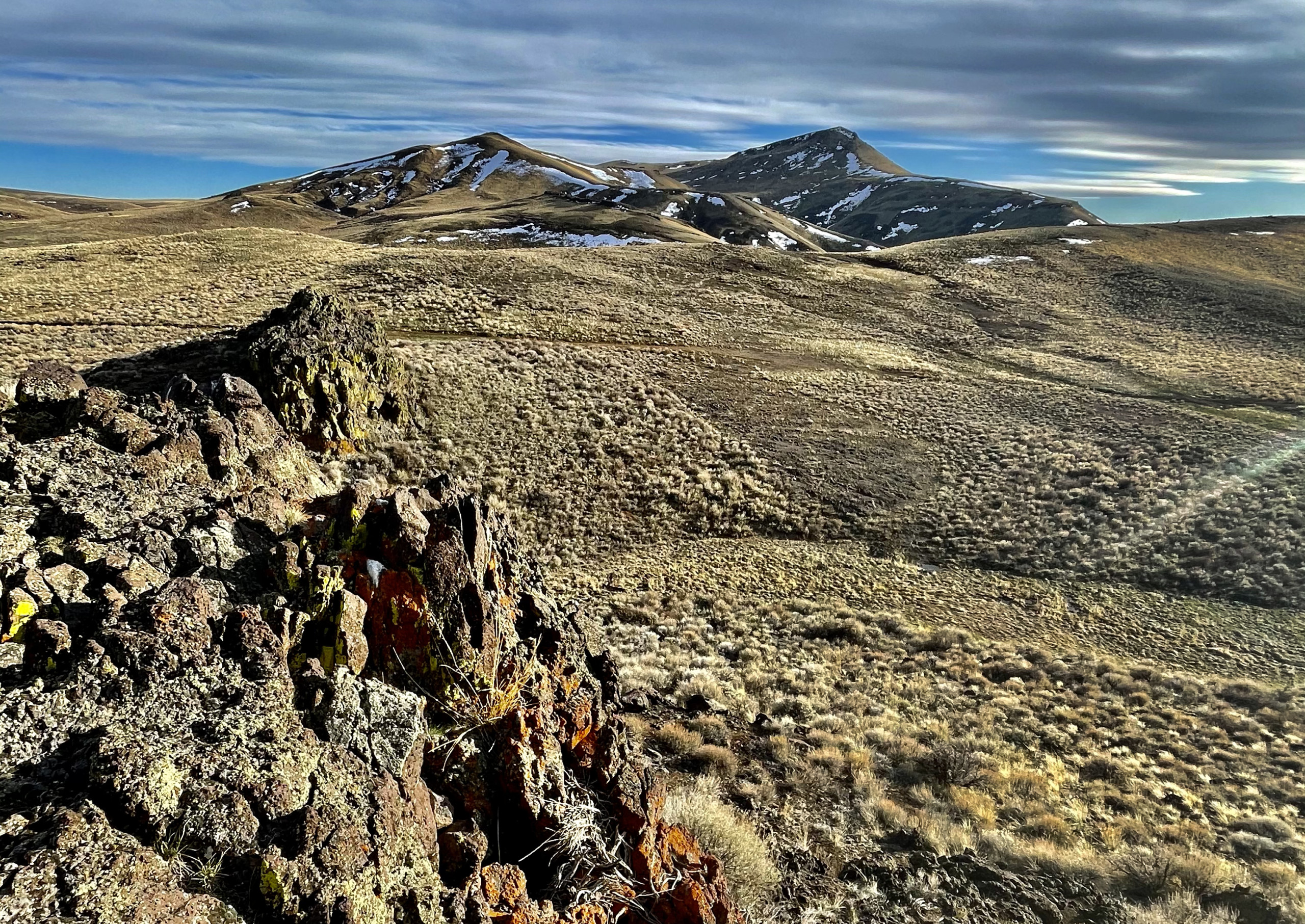Water in the desert
Set among a sea of sagebrush, the Trout Creek Mountains harbor a variety of wet habitats and deep willow-lined canyons. Aspen woodlands bring striking colors to the landscape in fall and support the livelihoods of beavers. Known as nature’s engineers, beavers mitigate the impacts of a changing climate, help conserve water during periods of drought, and enhance wetland carbon storage. They are considered one of the most cost effective and sustainable solutions for ecological restoration and resilience.


The project area contains numerous wet meadows and includes more than 75 miles of streams and springs. Groundwater supplies sustain these habitats and ensure that terrestrial and aquatic species can persist during the dry seasons. Many mountain creeks drain to Oregon’s driest spot—the Alvord Basin—providing critical water to a desert landscape that supports plants and animals unique to this portion of the Great Basin, several of which are threatened or endangered.


A species of conservation concern, Lahontan cutthroat trout are the largest of the four cutthroat subspecies and are well-adapted to the alkaline conditions found in many desert environments. These fish were once widespread throughout the Lahontan Basin of California, Nevada and southeast Oregon, but their range has shrunk considerably. Today, native populations are still found in Oregon’s Whitehorse and Willow creek basins.


Some of the project’s conservation parcels are scattered among public lands and the designated Wilderness Study Areas (WSAs). These lands are places that have wilderness characteristics – size, naturalness, and outstanding opportunities for solitude or primitive recreation. They allow for non-motorized access/recreation and are open to public hunting and fishing per state regulations. Trout Creek Mountain WSAs within the project area include Mahogany Ridge, Red Mountain and Willow Creek.

Feature image of Trout Creek Mountains — Jake Polvi
Wildlife Camera Videos
Related Reads
Reaching for new heights in conservation
Together, we can conserve Disaster Peak Ranch!
Going with the flow
We're restoring a creek to help fish and wildlife.
A land of learning
Local Tribal members shared stewardship practices to inspire youth.
Looking out for the birds
Volunteers help guide restoration plans with wetland bird surveys.
Virtual fences mooove cows online
Virtual fence is a new technology that can help land managers maintain wildlife connectivity in permitted grazing areas.
Tribal Gatherings
Tribal leaders discussed the Native history and stewardship of their homelands at Trout Creek Ranch.
Research fueled by fire
Oregon State University finished 10 years of fieldwork on sage-grouse responses to wildfire.
Tribal Stewards
Tribal teens lead on conservation efforts through Northwest Youth Corps.
Spring returns
Rod Klus returns to researching sage-grouse for Oregon Department of Fish and Wildlife.
Mountains of Research
Researchers spent a summer in the mountains and left with more than data.
Spreading wings in conservation
Jack Strang created new connections to the high desert during our first internship.
Neighbors helping neighbors fight fires
Rangeland Fire Protection Associations protect the high desert and each other.
















